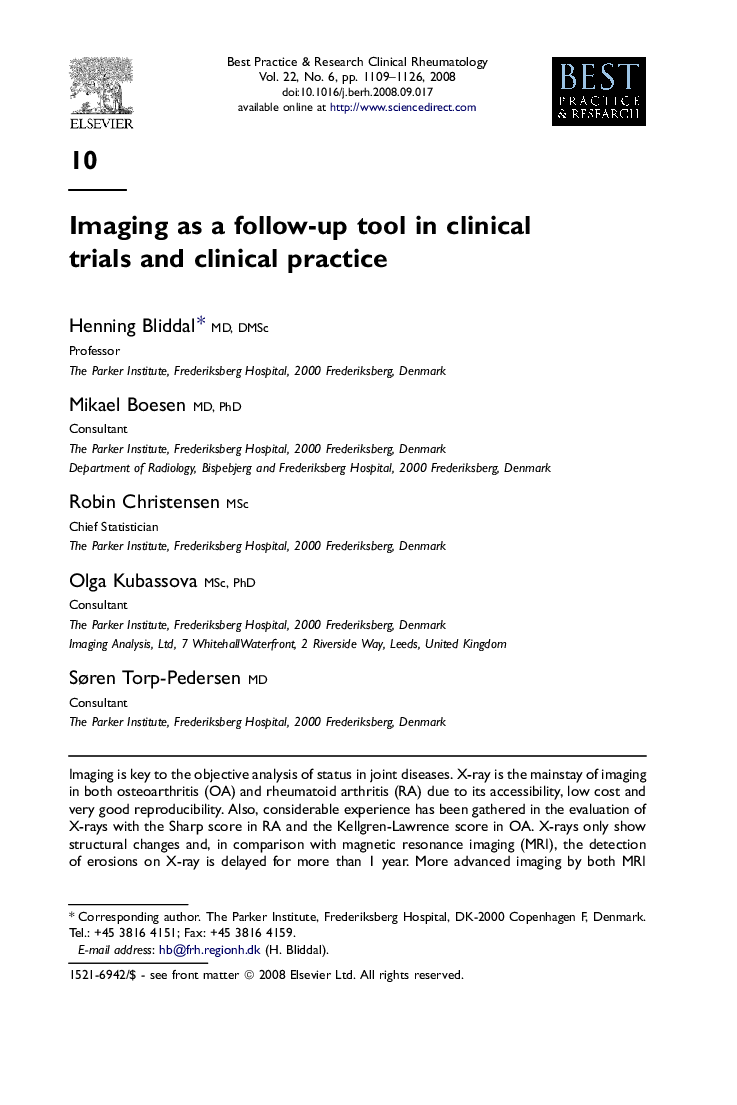| Article ID | Journal | Published Year | Pages | File Type |
|---|---|---|---|---|
| 3343376 | Best Practice & Research Clinical Rheumatology | 2008 | 18 Pages |
Abstract
Imaging is key to the objective analysis of status in joint diseases. X-ray is the mainstay of imaging in both osteoarthritis (OA) and rheumatoid arthritis (RA) due to its accessibility, low cost and very good reproducibility. Also, considerable experience has been gathered in the evaluation of X-rays with the Sharp score in RA and the Kellgren-Lawrence score in OA. X-rays only show structural changes and, in comparison with magnetic resonance imaging (MRI), the detection of erosions on X-ray is delayed for more than 1 year. More advanced imaging by both MRI and ultrasound (US) may add to clinical examinations by showing signs of RA activity. US is by far the easiest modality to apply in a rheumatology outpatient setting, and is becoming an everyday diagnostic tool in many clinics. The definitions and standards for US are still being tested and need further work before application in longitudinal settings is possible. Reproducibility is better with MRI, but this examination is time-consuming, both in the acquisition phase with the patient and also for interpretation and scoring by the examiner. The latter issue seems to be overcome by computer-assisted diagnostics using algorithms for automatic evaluation. With technical developments and increasing knowledge regarding both MRI and US, both of these modalities may be of value in the evaluation of rheumatology patients.
Related Topics
Health Sciences
Medicine and Dentistry
Immunology, Allergology and Rheumatology
Authors
Henning (Professor), Mikael (Consultant), Robin (Chief Statistician), Olga (Consultant), Søren (Consultant),
